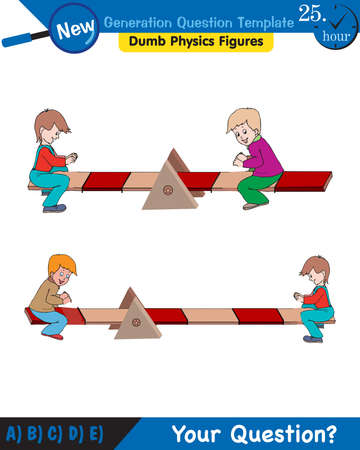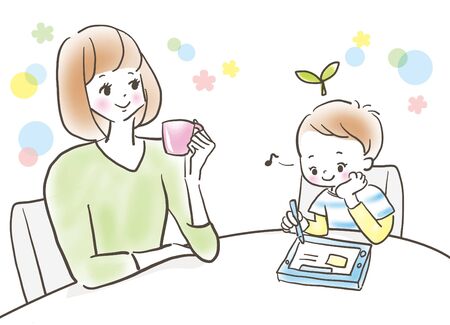1. Understanding Bilingualism and Multilingualism in Children
What Does It Mean to Be Bilingual or Multilingual?
Bilingual children can use two languages, while multilingual children can use more than two. In the United States, many children grow up hearing and speaking English at school and another language at home. This is common in families with Hispanic, Asian, African, or European backgrounds. Sometimes, kids may even speak three or more languages if their parents come from different countries or communities.
Types of Bilingualism
| Type | Description | Example |
|---|---|---|
| Simultaneous Bilingualism | Child learns two languages from birth or before age 3 | A baby hears Spanish at home and English at daycare |
| Sequential Bilingualism | Child learns one language first, then another after age 3 | A preschooler speaks Mandarin at home, then starts learning English at kindergarten |
| Balanced Bilingualism | Child has similar skills in both languages | A child can read, write, and talk easily in both English and French |
| Dominant Bilingualism | Child is stronger in one language than the other(s) | A child speaks Tagalog fluently but uses simpler words in English |
Common Myths About Bilingual Language Development
- Myth: Learning two languages causes confusion.
Fact: Kids can separate languages naturally. Mixing words (code-switching) is normal and not a sign of confusion. - Myth: Being bilingual delays speech development.
Fact: Bilingual kids reach speech milestones at about the same age as monolingual kids. - Myth: Parents should only speak English with their kids in the U.S.
Fact: Using a home language helps kids build strong family bonds and cultural identity. It does not hurt their English skills. - Myth: If a child has trouble with language, dropping one language will help.
Fact: It’s best to support both languages. Taking away a home language can make it harder for the child to communicate with family members.
The U.S. Cultural Context: Why Diversity Matters in Speech Therapy
The United States is one of the most linguistically diverse countries in the world. According to the U.S. Census Bureau, over 350 languages are spoken in American homes. Pediatric speech therapists must understand not just language differences but also cultural practices around communication. For example, some cultures encourage children to speak up, while others value listening more than talking. Knowing these differences helps therapists provide respectful and effective care for every child.
Cultural Examples Relevant to the U.S.
- A Mexican-American child might celebrate both Thanksgiving and Día de los Muertos, learning vocabulary from both traditions.
- A Somali-American family might prioritize oral storytelling and recitation over written language in early childhood.
- A Filipino-American household may mix English and Tagalog during family meals or gatherings.
The Importance of Family and Community Involvement
Pediatric speech therapy works best when families share information about their home language routines and cultural values. Therapists who respect these factors are better able to connect with children and help them thrive in all their languages.
2. The Role of Family and Community in Language Development
When working with bilingual and multilingual children, understanding the influence of family culture, community resources, and heritage is essential for effective pediatric speech therapy. These factors shape how children learn language, communicate, and respond to interventions. In diverse communities across the United States, families bring unique traditions, values, and languages that impact their children’s language experiences.
Family Culture: The Heart of Communication
Family routines, beliefs, and expectations about communication play a big role in shaping a child’s language skills. For example, some families may value storytelling or group conversations at mealtimes, while others may prioritize listening to elders or speaking only when spoken to. Speech therapists should take time to learn about these differences so they can tailor their approach to each family’s style.
| Family Practice | Potential Impact on Language | How Speech Therapists Can Help |
|---|---|---|
| Storytelling traditions | Richer vocabulary, narrative skills | Encourage sharing family stories during sessions |
| Respect for elders (listening more than speaking) | Strong listening skills, less expressive language use | Create safe spaces for children to express themselves without breaking family norms |
| Multigenerational homes | Exposure to multiple dialects or languages | Include grandparents or other caregivers in therapy activities |
The Power of Community Resources
Community centers, libraries, cultural organizations, and local events often provide opportunities for children to hear and use different languages. Accessing books in multiple languages, attending bilingual story times, or joining heritage celebrations can boost a child’s confidence and motivation in using both languages. Speech therapists can help families find and use these resources for extra practice outside of therapy sessions.
Examples of Helpful Community Resources:
- Bilingual library programs or book clubs
- Cultural festivals celebrating heritage languages
- Community mentors who share the child’s background
- Parent support groups for raising multilingual kids
Heritage Influence on Communication Styles
A child’s heritage shapes not just the words they know but how they use language socially. For instance, some cultures encourage direct eye contact while speaking; others may see it as disrespectful. Understanding these cultural norms helps speech therapists avoid misunderstandings and build trust with families.
| Cultural Norm | Communication Style Example |
|---|---|
| Direct vs. Indirect Communication | Saying exactly what you mean vs. using hints or context clues |
| Eye Contact Expectations | Looking adults in the eye vs. looking away as a sign of respect |
| Turn-Taking Rules | Waiting for a pause vs. overlapping speech in group talk |
Supporting Success in Speech Therapy Interventions
The best outcomes happen when therapists involve families and communities every step of the way. By respecting each family’s culture, connecting them with helpful community resources, and being aware of heritage influences on communication styles, speech therapists empower bilingual and multilingual children to reach their full potential.

3. Assessment Considerations for Diverse Language Learners
When working with bilingual and multilingual children, speech-language pathologists (SLPs) need to be mindful of unique factors that can impact assessment outcomes. Standardized tests are often designed for monolingual English speakers and may not accurately reflect the abilities of children who use more than one language. To provide the best care, it’s important to use culturally responsive practices and avoid common pitfalls.
Understanding Language Development in Multilingual Children
Bilingual and multilingual children develop language skills differently compared to their monolingual peers. For example, a child might mix languages or have different strengths in each language. These patterns are normal and not necessarily signs of a disorder.
Key Differences in Language Development
| Aspect | Monolingual Children | Bilingual/Multilingual Children |
|---|---|---|
| Vocabulary Size | Larger in one language | Combined vocabulary across languages may be equal or greater |
| Language Mixing | Not present | Code-switching is common and normal |
| Error Patterns | Typical errors for age group | May show transfer from one language to another, which is not always a concern |
Culturally Responsive Assessment Tools
To get an accurate picture of a child’s communication abilities, SLPs should use tools that consider cultural and linguistic backgrounds. Here are some best practices:
- Use multiple sources: Collect information from parents, teachers, and caregivers about the child’s communication in all languages used at home and school.
- Select appropriate tests: When possible, choose assessments that are normed on populations similar to the child being tested or designed for bilingual speakers.
- Dynamic assessment: Evaluate how a child learns new language tasks rather than just what they know right now. This helps separate language difference from disorder.
- Parent and teacher interviews: Structured interviews help gather valuable insight about the childs typical communication patterns across settings.
- Observation: Watch the child interact in natural environments using both languages when possible.
Popular Culturally Responsive Tools in the U.S.
| Name of Tool | Description | Main Languages Supported |
|---|---|---|
| Bilingual English-Spanish Assessment (BESA) | A standardized tool specifically for Spanish-English bilingual children aged 4-6 years old. | English, Spanish |
| PARENT Questionnaire (Pragmatic Evaluation) | A survey for caregivers to describe their child’s functional communication skills at home and in the community. | Multiple (translated versions available) |
| Dynamic Assessment Protocols | Non-standardized methods focusing on learning potential instead of static knowledge. | No language restrictions; adaptable for any background |
| SALT Software (Systematic Analysis of Language Transcripts) | A tool to analyze language samples in both English and Spanish, useful for comparing progress over time. | English, Spanish (others supported with custom coding) |
Avoiding Bias During Assessment
Cultural and linguistic bias can lead to misdiagnosis or inappropriate recommendations. Here are ways to reduce bias:
- Avoid direct translation: Translating English-only tests into another language often leads to inaccurate results.
- Acknowledge cultural norms: Some behaviors considered “typical” in one culture may differ in another. For example, eye contact expectations or storytelling styles can vary widely between cultures.
- Assess both languages: Always evaluate the child’s skills in all languages spoken regularly, not just English.
- Work with interpreters: If you do not speak the family’s home language, collaborate with trained interpreters familiar with speech therapy settings.
The Importance of Community Input
An effective assessment process includes voices from the child’s community—family members, teachers, and even peers—to build a fuller picture of strengths and needs. By making assessments more inclusive and culturally sensitive, SLPs can better support bilingual and multilingual children on their journey toward communication success.
4. Evidence-Based Treatment Approaches
Supporting bilingual and multilingual children in speech therapy requires strategies that respect their unique linguistic backgrounds and cultural identities. In American communities, where families may speak Spanish, Mandarin, Vietnamese, Arabic, or many other languages at home, pediatric speech therapists use evidence-based approaches to help every child thrive.
Key Strategies for Bilingual and Multilingual Children
- Dual-Language Support: Encourage development in both the home language and English. Research shows that strengthening a childs first language supports overall communication skills, including learning English more effectively.
- Culturally Responsive Materials: Use books, pictures, and games that reflect the childs cultural background. This helps children feel seen and understood while making therapy sessions more engaging.
- Family Involvement: Actively involve parents and caregivers in the process. Provide guidance on how to support speech and language at home using everyday routines in both languages.
- Collaboration with Educators: Work closely with teachers and school staff to create a consistent support system across home and school environments.
Comparison of Intervention Techniques
| Approach | Description | Benefits for Bilingual/Multilingual Children |
|---|---|---|
| Code-Switching Practice | Allowing children to move between languages during activities | Builds confidence and natural communication skills in both languages |
| Translanguaging Strategies | Using all of a child’s language resources to express ideas | Encourages flexible thinking and deeper understanding of concepts |
| Thematic Vocabulary Building | Selecting themes relevant to family life or community events (e.g., holidays) | Makes learning meaningful and culturally relevant; strengthens vocabulary in both languages |
| Cultural Storytelling | Incorporating traditional stories from the child’s culture | Promotes narrative skills while honoring cultural heritage |
Practical Tips for American Communities
- Acknowledge Diversity: Every family is different. Ask families about their traditions, holidays, favorite foods, or stories to personalize sessions.
- Use Community Resources: Connect with local libraries or cultural centers for multicultural books and materials.
- Bilingual Role Models: Whenever possible, introduce children to bilingual adults from their community who can serve as positive examples.
- Sensitivity Training: Speech therapists should participate in ongoing cultural competence training to better understand the values and communication styles present in American multicultural settings.
Integrating Cultural Values in Therapy Goals
Pediatric speech therapy isn’t just about language—it’s about building a bridge between home culture and American society. By setting goals that honor both the child’s native language and English, therapists empower children to succeed socially and academically without losing touch with their roots.
5. Collaboration with Families, Educators, and Community Partners
Why Teamwork Matters for Bilingual and Multilingual Kids
Supporting bilingual and multilingual children in speech therapy isn’t a one-person job. It works best when therapists, families, teachers, and community organizations join forces. This team-based approach helps create a support system that understands each child’s unique language background and learning needs.
Key Partners in Supporting Diverse Learners
| Partner | Role in the Child’s Speech Therapy Journey |
|---|---|
| Families | Share insights about home language use, cultural values, and daily routines. Reinforce strategies outside of therapy sessions. |
| Educators (Teachers, School Staff) | Observe the child’s communication at school, share classroom challenges or successes, and adapt lessons to support language growth. |
| Speech Therapists | Design personalized therapy plans, coordinate with other team members, and monitor progress across settings. |
| Community Organizations (Cultural Centers, Libraries) | Offer language-rich activities, provide translation services, and help connect families with resources. |
Bridging Communication Gaps: Practical Tips
- Regular Check-ins: Schedule meetings or send quick updates to keep everyone on the same page about the child’s goals and progress.
- Culturally Responsive Communication: Use interpreters when needed and respect family preferences for how information is shared—whether by email, phone call, or in person.
- Resource Sharing: Exchange materials like storybooks in multiple languages or visuals that can be used at home and school.
- Celebrate Progress Together: Recognize small wins as a team to motivate the child and build trust among partners.
The Impact of Working Together
A strong network helps identify challenges early and ensures consistent support for bilingual and multilingual children. When everyone collaborates openly, kids feel understood—and their communication skills can thrive both at home and in their communities.


